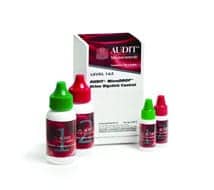
What’s the priority at your lab, work station consolidation or fast turnaround times? Do these two goals compete, and if so, how do you resolve the conflict? Drop me an e-mail ( [email protected] ), and I’ll report on responses in April’s Editor’s Notebook.
Also in this issue, we hear from Elia Mears, director of laboratory services at Leonard J. Chabert Medical Center in Houma, La., who saved her hospital $600,000 with the introduction of prealbumin testing. As Mears notes in her story on page 30, until a few years ago, protein-calorie malnutrition was considered a relatively rare condition that affected only a small segment of the poor and elderly. Today, we know this condition affects 30 and 50 percent of hospitalized patients.
According to a recent e-mail from Beckman Coulter, one statement in last month’s hematology industry overview, (“Migrating different testing technologies to a single hematology platform for workflow and efficiency is what labs are demanding.”) does not represent the company’s position.
“Our philosophy is to make testing simpler and more automated so it is more readily accessible, but this doesn’t mean all tests — be they hematology or cytometry — should be on one system. Our customers are telling us that they really don’t want to put everything in one box because the turnaround efficiency of the routine hematology analyzer would be adversely impacted and would risk compromising the service provided to physicians,” according to Alan Burton, Beckman Coulter’s market manager for cellular analysis .
Also, in the ninth paragraph of the hematology industry overview, CD64 was incorrectly reported. It should have read CD34. Thanks for keeping us honest.


